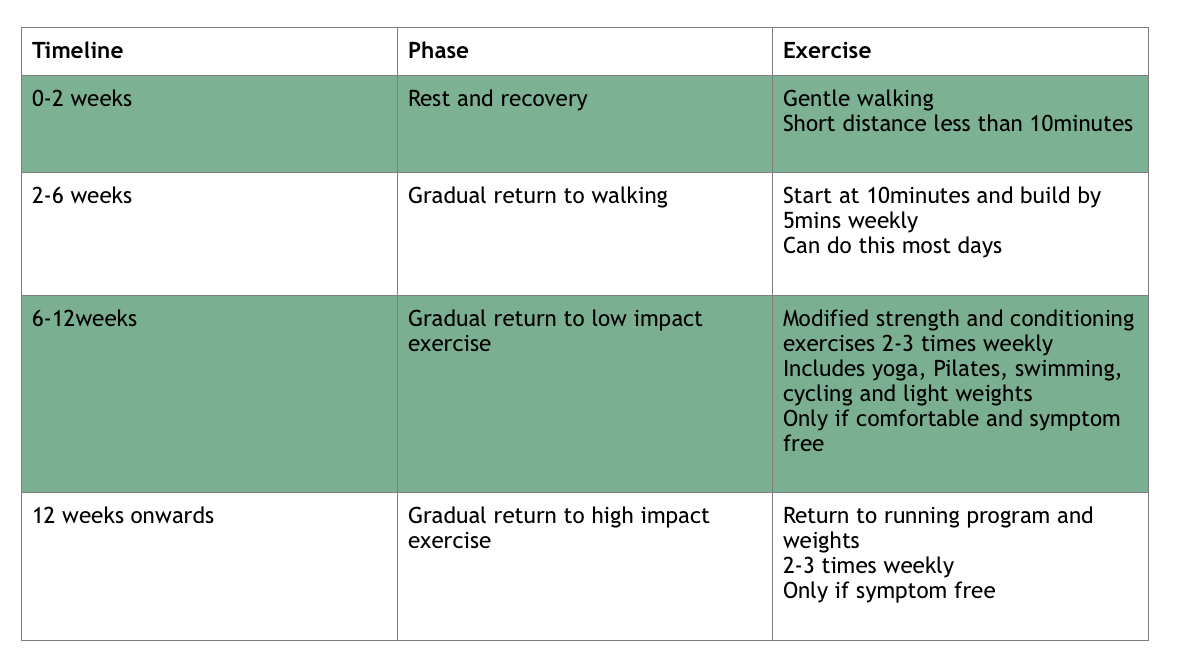“When can I start exercising after pregnancy?”
This, by far, is one of the most commonly asked questions and topics in our clinic.
And for good reason! As active women ourselves, we champion exercise and everything that comes with it, including cardiovascular health, strength, mental well-being and self-identity.
However, we also know having a baby can be a huge transition and disrupt our ability to do the things we love for a short time.
So, what’s our answer? “As soon as your body safely can - but let’s work together to make that happen.” Our goal as pelvic health physios is to work with you and your unique body to get back to doing those things you love to do!
Some can gradually return to exercise using the model below, while others may need an individualised programme shaped around common symptoms and personal needs.
How will I know if I need an individualised exercise programme?
It’s no secret, following pregnancy, many anatomical and physiological changes occur to your body. In particular, your pelvic floor and abdominal wall muscles will likely become stretched, lose strength, and potentially injured during birth and labour.
The pelvic floor muscles act like a hammock at the base of your pelvis to support your bladder, uterus and bowel. We highly encourage you to seek help if you’re experiencing any of the following symptoms:
Heaviness, pressure or bulge in the vaginal region
Leaking of the bladder or bowel
Urgency or increased frequency of the bladder or bowel
Pain in the low back, pelvis and groin region
What about Diastasis Recti?
During pregnancy, the stretch of your abdominal muscles can lead to separation called diastasis rectus abdominus and affect your core function and strength. Symptoms you may notice include:
Noticeable gap
Doming or ballooning along the midline of your abdominal muscles
If you think you may have one or more of the symptoms above, it’s recommended that you be assessed and guided by a pelvic health physiotherapist. Through conversation, tests, and measurements, we can assess your pelvic floor, abdominal muscles and body as a whole system.
Then, together we can look at your goals and offer an individualised program.
Postpartum Exercise Programme
Even if you are not experiencing the above symptoms, the key term to remember as your return to exercise post-partum is a “gradual return”. Your gradual increase in training load will reduce your risk of additional injuries and pelvic floor muscle dysfunction.
A general timeline for returning to exercise post-partum is below.
Remember, your body just grew a tiny human! Give her some grace and treat her well.

